2. Music and Time.
We make a musical escape in time whenever we hear a piece by an earlier composer; it is only an unusual experience
when the composer attempts to conjure up an earlier period still. Five examples of such temporal legerdemain will
occupy the second hour of this class. Before that, we look at two British monarchs (Elizabeth I and George III), each
as depicted in dramatic works by two later composers. One of each pair quotes from music of the time, while the other
doesn’t; how does the comparison illuminate the dynamics of musical time-travel?
By talking of “musical time-travel” as listeners, we are assuming a journey back to some distant period. But the
performer balances this against something else: a total concentration in which normal time simply stops—a journey
into the now or escape from time. Every musician knows this, but the ability to convey it to others
is rare indeed. We open the class with a handful of these exceptional artists.
The class ends with a featured work played in full: Samuel Barber’s Knoxville, Summer of 1915. If you don't
already know it, I recommend reading the text, which is based on a poetic
memoir by James Agee. rb.
The script, videos, and images will be posted immediately after class.
VIDEO LINKS
Most of the clips shown in class are available on YouTube, but there are a few exceptions. Most serious is the lack of
a complete Enigma Variations ballet. I give a link to purchase it from Amazon; the $30 price tag may seem steep,
but the DVD includes two other complete works of similar length. The available clips, though, include many other goodies,
including a 4½-minute documentary from the Royal Ballet and a 52-minute rehearsal sequence, both of which I strongly
recommend. The clips from the actual stage production are either inferior in quality and/or show variations that we did
not see in class, but there is one from the original 1968 production that is quite impressive.
The two opera scenes also present a difficulty. The Roberto Devereux from the Met is no longer available, but I
include an old video with Beverly Sills at Wolf Trap (with titles) and a more modern one from Madrid (without). The
scene we watched from Gloriana is indeed available, though in poor quality, so I have added a Madrid production
for this as well. You will see that I threw in a few extras, all *asterisked to indicate
that they were not played in class.
I have also added two sections of material left on the cutting-room floor: ideas that were part of my original
thinking but dropped for lack of time. For example, a section on MUSICAL TRIBUTES—composers reusing the music of
earlier composers—that I eventually rejected as being too straightforward. I give you links below to three
interconnected works: the Tchaikovsky tribute to Mozart that I mentioned in passing (in a ballet version by Balanchine),
a fragment of Stravinsky's tribute to Tchaikovsky (in his later arrangement for violin and piano), and a ballet by
Stravinsky revisiting the 18th century and using music then attibuted to Pergolesi.
I added the last section purely out of PERSONAL NOSTALGIA, fully aware that nobody else coming to this site will
feel the same as I do. I mentioned that The Boy Friend broke all West End box-office records between 1953
and 1959, but its success was blown out of the water by an unpretentious piece by Julian Slade and Dorothy Reynolds
called Salad Days, which ran for 2,283 performances. A simple feel-good story about two young people coming
to London after graduating from Cambridge, this was accompanied ony by two pianos. Not only was it the sound-track
of my teenage years, the piece was virtually designed to trigger the nostalgia of older audiences, for an England
where everything was simple, and everyone who mattered was upper-middle-class! My link is to a later film of the
show, cued to five of the principal numbers. rb.
| A. THREE TENSES |
| |
Scarlatti: Sonata in E, K390 |
|
* Lucas Debargue, piano
* Béatrice Martin, harpsichord
* Ana Vidovic, guitar
(played complete in class)
|
| |
Mozart: Turkish Rondo |
|
* Lang Lang
* Yuja Wang
(arranged by Arkady Volodos)
|
| |
Sondheim: A Little Night Music |
|
* Send in the Clowns
(Judi Dench, BBC Proms 2010)
|
| |
| B. TWO MONARCHS, FOUR COMPOSERS |
| |
Donizetti: Roberto Devereux |
|
* Wolf Trap 1975
(Beverly Sills, John Alexander)
* Madrid 2023
(Mariella Devia, Gregory Kunde)
|
| |
Britten: Gloriana |
|
* Phyllida Lloyd film
(Josephine Barstow, Tom Randle)
* Madrid 2022
(Anna Caterina Antonacci, Leonardo Capalbo)
|
| |
Maxwell Davies: Eight Songs… |
|
* Complete, cued to start in class
(Kelvin Thomas)
|
| |
Miranda: Hamilton |
|
* You'll be back
(Jonathan Groff)
|
| |
| C. FIVE TIME-CAPSULES |
| |
Elgar/Ashton:Enigma Variations |
|
* Buy on Amazon
(with 2 other works)
* Stage production
(documentary)
* — Arthur Troyte Griffin
(Anthony Dowell in the premiere)
* — Winifred Norbury
(Romany Pajdak)
* — Dorabella
(Francesca Heyward)
* In rehearsal
(52-minute presentation)
* — Elgar and his wife
(Christina Arestis & Gary Avis)
|
| |
Ravel: La Valse |
|
* Ashton ballet, complete
* Ribeiro ballet, complete
(cued to start in class)
* Balanchine ballet, complete
(poor quality)
|
| |
Wilson: The Boy Friend |
|
* Ken Russell movie trailer, 1971
|
| |
Kentridge: More Sweetly… |
|
* Complete
* Kentridge discusses the work
|
| |
Barber: Knoxville, Summer of 1915 |
|
* Complete
(Dawn Upshaw)
|
| |
| MUSICAL TRIBUTES |
| |
Tchaikovsky/Mozart |
|
* Mozartiana
(as ballet by Balanchine)
|
| |
Stravinsky/Tchaikovsky |
|
* Divertimento, excerpt
(Augustin Hadelich)
* — the same, complete
|
| |
Stravinsky/Pergolesi |
|
* Pulcinella
(Basler Ballett)
|
| |
| PERSONAL NOSTALGIA |
| |
Salad Days |
|
* We said we wouldn't look back
* I sit in the sun
* Look at me, I'm dancing!
* We're looking for a piano
* Salad Days
|
| |
|
|
|
|
|
| IMAGES |
The thumbnails below cover the slides shown in class, though
there may be a few small discrepancies. Click the thumbnail to see a larger image.
Click on the right
or left of the larger picture to go forward or back, or outside it to close. |
 | |
 | |
 | |
 | |
 | |
 | |
 | |
 | |
 | |
 | |
 | |
 | |
 | |
 | |
 | |
 | |
 | |
 | |
Here are brief bios of the composers and writers considered in the class, listed in order of birth.
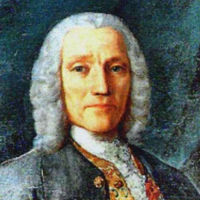 |
Domenico Scarlatti, 1685–1757. Italian composer.
The son of the major opera composer Alessandro Scarlatti (1660–1725), Domenico became one of the influential composers for the harpsichord, for which he wrote 555 single-movement sonatas of extraordinary range. He spent most of his career as court composer in Spain, although he also worked in Rome, Warsaw, London, and Lisbon.
|
 |
Wolfgang Amadeus Mozart, 1756–91. Austrian composer.
A child prodigy as both performer and composer, Mozart produced an extraordinary body of work in all genres over a relatively short life. He wrote the greatest of his many operas after moving to Vienna: three collaborations with Lorenzo da Ponte—The Marriage of Figaro (1786), Don Giovanni (1787), and Così fan tutte (1790)—framed by two German Singspiels: The Abduction from the Seraglio (1782) and The Magic Flute (1791).
|
 |
Niccolò Paganini, 1782–1840. Italian violinist and composer.
A virtuoso in the manner of a modern rock star, Paganini drew huge audiences wherever he played. Such was his virtuosity that he was rumored to be in league with the Devil. But there was nothing meretricious about his technique, which expanded greatly upon traditional practice, nor in the many works he wrote to play himself and challenge others.
|
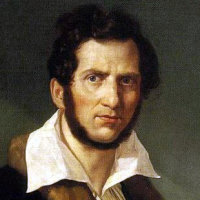 |
Gaetano Donizetti, 1797–1848. Italian composer.
One of the leading composers of historical and romantic operas in the bel canto era, including a trilogy featuring Tudor Queens, plus comedies in both Italian and French, Donizetti nonetheless began his career with a mythological scene, Pygmalion.
|
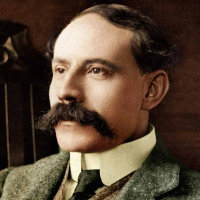 |
Edward Elgar, 1857–1934. English composer.
Elgar was the leading figure in English music during the late Victorian and Edwardian eras. With works such as the Enigma Variations and his concerti for violin and cello, he was one of the first English composers after Purcell to achieve an international reputation.
|
 |
Serge Diaghilev, 1872–1929. Russian impresario.
He founded the Ballets Russes in 1909. His company dominated the Parisian scene for at least a decade, and gave opportunities to such figures as the dancer Vaslav Nijinsky, the choreographer George Balanchine, the designer Léon Bakst, and the composer Igor Stravinsky.
|
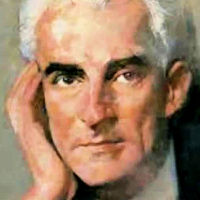 |
Maurice Ravel, 1875–1937. French composer.
Though often grouped with Debussy as a musical Impressionist, Ravel was very much his own man. As a composer with a strong sense of tradition, he often wrote in older dance forms. As a virtuoso pianist, he wrote piano music of transcendent difficulty that extended the range of piano techniques. And as a master orchestrator, he enriched 20th-century music with some of its most vibrant colors.
|
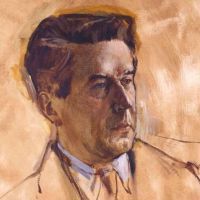 |
Frederick Ashton, 1904–88. English choreographer.
Like most choreographers, Sir Frederick Ashton began as a dancer, and continued performing even as his fame blossomed as a choreographer. He became artistic director of the Royal Ballet in 1963, but had worked with the company and its various predecessors since 1935, responsible for creating many of the works that are the foundations of English ballet today.
|
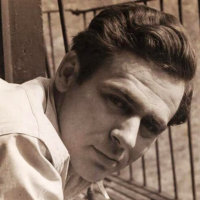 |
James Agee, 1909–55. American writer.
Agee's autobiographical novel about growing up in Knoxville, A Death in the Family (1957), won a posthumous Pulitzer Prize. He was also co-author with photographer Walker Evans of the Depression documentary book Let Us Now Praise Famous Men (1943), an influential film critic for Time Magazine, and screenwriter of The African Queen.
|
 |
Samuel Barber, 1910–81. American composer.
He wrote the score for Martha Graham's Cave of the Heart, on the Medea legend. He has written in most other genres, including opera (Antony and Cleopatra and Vanessa), and is probably most celebrated for his Adagio for Strings (1938).
|
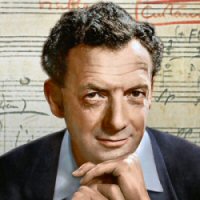 |
Benjamin Britten, 1913–76. English composer.
Arguably the leading opera composer of the mid-20th century, Britten's major operas have included Peter Grimes (1945), Billy Budd (1951), Gloriana (1953), A Midsummer Night's Dream (1960), and Death in Venice (1973), plus many stage works for smaller forces. He was equally active as a composer of instrumental music and text settings, and latterly as a conductor and accompanist.
|
 |
Sandy Wilson, 1924–2014. British composer and lyricist.
After writing material for revues, some with major artists, Wilson combined text and music for his first full-length success, The Boy Friend, which opened in 1953 and went on to break West End records; the 1954 Broadway production, introducing Julie Andrews, ran for almost two years. His later shows such as Valmouth and Divorce Me, Darling, did well but were less successful.
|
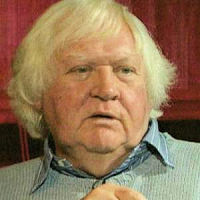 |
Ken Russell, 1927–2011. British film director.
Between 1959 and 1970, Russell directed arts documentaries for the BBC, fighting to include live actors and a narrative script, often focusing on more controversial details. His films about Debussy, Delius, Mahler, Tchaikovsky, Liszt and others increasingly pushed the limits for a musical bio-pic. Meanwhile, the breadth of his conception and ever-evolving flamboyant style earned him commissions in Hollywood such as Women in Love (1969), The Devils (1971), Tommy (1975), and a film version of Sandy Wilson's The Boy Friend (1971).
|
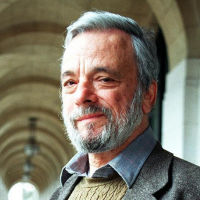 |
Stephen Sondheim, 1930–2021. American composer and lyricist.
A protégé of Oscar Hammerstein's, Sondheim made his Boadway debut in 1957 as lyricist for West Side Story and Gypsy, but he soon began his own string of musicals, writing the music as well as the words, including A Funny Thing Happened on the Way to the Forum (1962), A Little Night Music (1973), and Sweeney Todd (1979). Often dealing with non-traditional subjects, these and others largely redefined the Broadway in the later 20th century.
|
 |
Peter Maxwell Davies, 1934–2016. British composer.
Sir Peter Maxwell Davies was Master of the Queen's Music (composer laureate) for the last decade of his life, celebrating his by-then establishment status. But he began as a radical, writing works such as Eight Songs for a Mad King that stretched the boundaries of performance practice. Like Britten, he has always liked working for specific performers and places, including many works for his adopted home of Orkney to the North of Scotland.
|
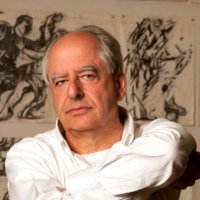 |
William Kentridge, 1955– . South African artist and opera director.
Although he studied charcoal drawing as a child, Kentridge originally hoped to become an actor, and studied at the Théâtre Jacques Lecocq in Paris. Realizing his limitations as a performer, he stuck to art as a career, producing a series of works on paper and film, often with themes of social justice. In later years, his two interests have combined in a series of opera productions combining live action and film, such as his Wozzeck and Lulu for the NY Met.
|
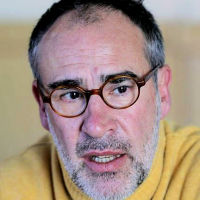 |
Paulo Ribeiro, 1959– . Portuguese choreographer.
Ribeiro founded his own company in 1995, and remains its artistic director. Besides work overseas, notably with the Nederlands Dans Theater, he has been ballet master of other Portugese companies such as the Ballet Gulbenkian (2003–05) and the National Ballet Company (2016–18).
|
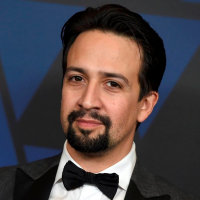 |
Lin-Manuel Miranda, 1980– . American composer.
As the playwright, lyricist, composer, and star performer in his 1915 mega-hit Hamilton, Miranda became an unheard-of quadruple-threat on Broadway. He had shown many of the same talents, however, in his 2005 musical In the Heights, and has since developed his career further into film (both acting and directing).
|




































